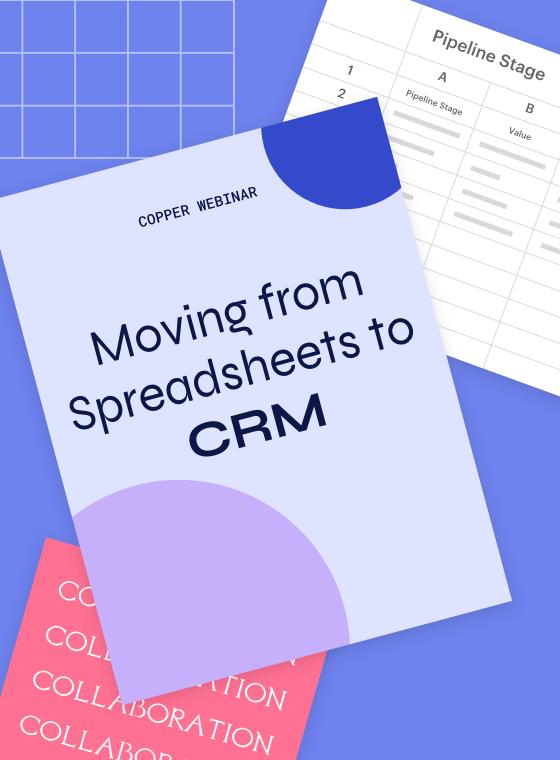
Dann Albright
Contributor
As a sales manager, you’re expected to know how your sales team is doing. You should be able to point to specific evidence that your team is meeting their goals and generating revenue for the company—or prove that you know where they’re falling short.
Sales reports are the foundational tool for developing this knowledge. They give you a succinct overview of your team’s sales performance and help you communicate it to others.
But what should be in your sales reports? Which metrics should you be looking at? If you’re new to sales reporting, you might not know the answers to these questions.
We’re here to help. Let’s start with the best way to create sales reports, and go from there:
Use a CRM to save time creating sales reports.
Full-featured CRMs let sales reps log their calls, emails, sales, and other information relevant to your sales reporting. They also store all of your customer details. The combination of these data results in (actually) useful sales reports.
With a CRM, you can also slice or combine that information however you want, giving you a high-level overview or drilling down into very specific data points.
Drilling down to very specific information helps you see what’s working for your sales team.
Many CRMs also let you automate this process to get reports delivered automatically at specified intervals. Find the reporting section of your CRM and explore the automation settings to see which options are available to you.
It’s worth noting that you can get sales reports without a CRM (though we wouldn’t recommend it). You could create manual reports from Excel spreadsheets or Google Docs, for example. (More tips for Docs here.)
But automated sales reports from a CRM will save you time and effort, as well as ensure that all of your sales data lives in one place.

Pro-tip
Using Excel? 👇
Learn how to use a CRM to be more efficient with your spreadsheet data + workflows with this webinar.
How often should you run sales reports?
The short answer is “as frequently as is helpful.”
But don’t overdo it.
When you can run reports with a single click, it’s tempting to run full reports weekly or even daily. But that’s usually overkill.
While it doesn’t take much time to reference a report, it does take mental energy to go through it, consider what action to take, and get proactive.
You’ll probably want to check some of the basic metrics—like progress toward quota, total sales, and maybe prospects-in-pipeline—on a weekly basis. But you don’t need to run a full report to get that information.
That’s why we recommend sales reporting once a month. It’s long enough between reports to see trends. But it’s not so long that you can’t address issues before they turn into problems.
You might find that every six weeks works. Or every three weeks. You might even be comfortable with quarterly sales reporting. Start with a report every month, and adjust from there to find out what’s best for you.
Try adding these metrics to your sales reports.
There are dozens, if not hundreds, of metrics you can include in your sales reports. But when you’re getting started, you’ll want to stick to the basics:
Total revenue is the master metric.
Your sales team exists to generate revenue, so total revenue is a foundational metric.
Year-to-date revenue is good for tracking your progress toward your annual revenue goal, while month-to-date gives you a shorter-term view that can help you pinpoint slowdowns in your sales cycle.
Quotas show your progress toward sales goals.
Most sales teams have a quota system (though some are moving away from this practice). Each rep might be expected to a close a certain number of deals or generate a specific amount of income. Or a specific group may need to hit a target number of outbound calls or emails.
Quotas let you see which reps and teams are making their goals and which need additional training or help. This information gives you a more granular view of where your total revenue is coming from and where there’s room for improvement.
Conversion rate measures sales efficiency.
How many leads, on average, need to enter your pipeline to result in one closed deal? That’s what conversion rate measures.
You can look at benchmark metrics for your industry, but the best use of this figure is to look at it for your sales team over time. If your conversion rate goes up, your salespeople are getting better.
Average deal size helps in sales forecasting.
Depending on your company, the average purchase amount for a closed deal could vary. Unless every deal is worth the same amount of money, you’ll want to keep track of your average deal size.
Combining your conversion rate and average deal size will help you make accurate sales predictions, and charting deal size over time shows improvement in upselling and cross-selling among your team.
Sales forecasting is an important responsibility of sales managers—and understanding the average deal size will give you more accurate forecasts.
Average lifetime value is a more general, but still useful, metric.
Are your salespeople closing the right deals? If they are, you should see customers with high lifetime value (LTV). This is especially applicable to subscription-based businesses.
This won’t be a useful report for every business. But if you want your marketing, sales, and customer success groups to know how they’re doing as a team, it’s a good one.
Sales velocity shows how long it takes to close a deal.
Depending on your type of business, you may have very long or very short sales cycles. B2B businesses with large average deal sizes tend to move more slowly, while B2C sales funnels are usually faster.
If your sales team can decrease the time it takes to make a sale over time, you’ll be getting more sales without hiring more reps. Which is a big win.
Prospects-in-pipeline shows the volume of leads you have.
How many potential customers are in every stage of your sales pipeline? If this number is high, you have a lot of potential sales. But if your pipeline starts to dry up, it could be cause for worry.
In many cases, your marketing team is responsible for filling the sales pipeline. But it’s still worth watching as a sales manager.
What should you include in your sales reports?
You don’t need to include all of these metrics in every report—including as much information as possible in each sales report results is overwhelming and not helpful.
Instead, it’s best to create concise reports that contain the metrics of most interest to your audience. Is this report for your information? Or are you presenting it to executives and stakeholders? You’ll probably include different information in each case.
For example, if you’re creating the report for yourself, you might include more granular metrics like average deal size and sales velocity. But your board is probably more concerned with total revenue and the potential of your pipeline to generate customers.
Big-picture reports like pipeline potential and overall quotas give a high-level view of your sales process.
Similarly, the format of your sales report should be influenced by your audience. If you’re using the report for your reference, you might just need to see the raw numbers. But if you’re sharing the report, clearly labeled graphs will be useful.
When you’re building a report in your CRM, it can be tempting to include as many metrics and visuals as possible, because they’re all right at your fingertips. But resist the temptation and keep your reports concise. Focus on the most important sales metrics to your audience.
Turn sales reports into action by creating leaderboards.
The point of a sales report isn’t just to share information—it’s also to inspire action. If one of your metrics is lagging, it’s time to do something about it.
That’s where leaderboards come in. Sales leaderboards are public versions of sales reports that keep a group of people (usually your sales team) up-to-date on their progress toward quotas:
Sales leaderboards create a healthy sense of competition while allowing salespeople to focus on their own goals.
This is a great way to encourage your salespeople to reach their own goals while making them feel part of the team as well.
If your CRM can run detailed sales reports, there’s a good chance that it can create leaderboards as well. Use them for your own information as well as motivating your team.
You’re ready to run basic sales reports.
With this information, you can start creating sales reports for your team. There’s a lot more to the world of sales reporting, and we’ll soon be releasing an advanced guide.
Until then, bookmark this page and check back to refamiliarize yourself with the basics of sales reporting whenever you need it!






